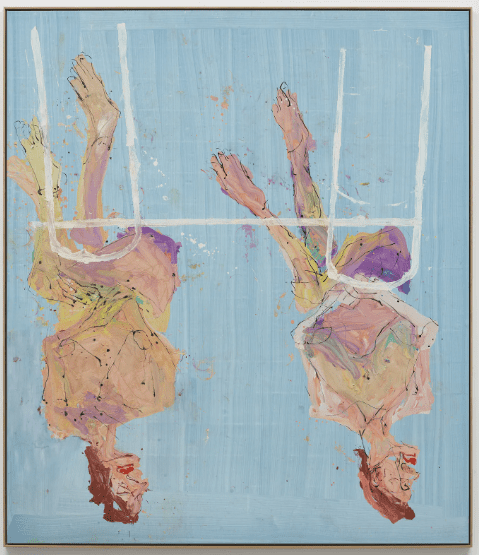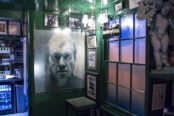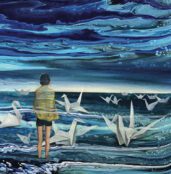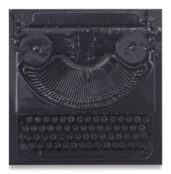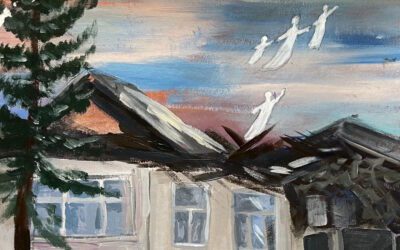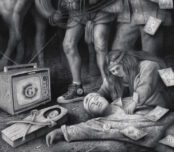After a six-and-a-half decade long career pockmarked by controversy and scandal, it is surprising that Georg Baselitz feels he has very much left to ‘confess’. Despite being born in 1938 in Deutschbaselitz, an area that would later become part of the German Democratic Republic (DDR), Baselitz has always held freedom of expression and personal integrity in much higher regard than political conformity.
In 1956, he was expelled from the first art school he attended, Hochschule für Bildende und Angewandte Kunst in East Berlin, for “sociopolitical immaturity.” In 1963, two pieces from his first solo exhibition in West Berlin were seized on grounds of obscenity and not returned to the artist until after a two-year-long court case. In various interviews, Baselitz has expressed controversial opinions on female painters’ status in the art world: “Women simply don’t pass the test. […]. The market test, the value test.” It is perhaps this iconoclasm which drew him to one of his primary influences, the German Expressionism denounced by the Nazi Party; particularly the primativist style of the Die Brücke group which made their French counterparts, Les Fauves (“The Wild Beasts”) seem tame by comparison.
This is not to say that Baselitz rejects entirely the influence of his upbringing: his work still bares clashing Socialist and Lutheran iconography and features animals native to Deutschbaselitz. The artist even took the name of his home region for his surname in 1961. Rather, Baselitz’s style is comprised of and reflective of the myriad and contradictory influences of his upbringing in the DDR. He remains true to his experience, but often at the cost of social inacceptability and public outrage. Now aged eighty-six and faced with the crisis of his mortality, what is it that such an outspoken and often controversial man wishes to confess?
A Confession of My Sins is Baselitz’s second solo-exhibition at the White Cube Gallery and, due to the artist’s advancing age, is reputed to be the last ever show during his lifetime. After an intensive year in the studio, Baselitz has produced a series of paintings featuring himself, his wife, and his iconic animals portrayed in his signature insouciant yet remarkably individualistic style. The work features his iconographic upside-down figures suspended on compositionally flat backgrounds; a visual language hailed for its ingenious method of abstracting the figurative subject matter in order to retain focus on the surface of the canvas itself. Interestingly, despite the perhaps morbid theme of the exhibition, these pieces still flaunt his Expressionist heightened palette. Only one piece, Der Maler in seinem Bett usw. (The Painter in His Bed, etc.), a revision of The Painter in His Bed 2022, retains the sombre tones of blues and greys expected of a meditation on mortality and sin. Otherwise, the style of these works tend to prioritise Baselitz’s artistic idiosyncrasies over the magnitude of the subject matter.
However, despite bearing all of Baselitz’s trademark stamps, these pieces are different: the canvases are less cluttered, motifs are simplified, and the entire composition is stripped back. In some areas the canvas is visible through fervent strokes – a marked difference to his usual thick impasto. This new technique is perhaps a result of the artist’s declining mobility, now reliant on a walking frame laden with supplies where he once traversed a canvas on hands and knees, but the effect is of honesty: Baselitz does not shroud his ideas in their usual trappings but invokes them starkly and unambiguously for interpretation. Die große Nacht im Eimer (The Big Night Down the Drain), a piece once confiscated for its ‘obscene’ subject matter, is revised in Die Zukunft schläft im Rechner: Alfred Rosenberg (The Future Sleeps in the Computer: Alfred Rosenberg) with the erection-wielding figure no longer cowering shamefully amongst a wash of dark hues but instead standing proudly, front and centre, illuminated by an auratic glow.
The works are markedly corporeal, with swathes of studies sketched out in thick blood-red ink and bold nudes pasted with flesh-tone stockings – no doubt a nod to Dadaist and primary influence, Hannah Höch – which intertwine elements of the human form and carnal lust in a conflation of sin with corporeal existence. Some figures now face each other, either in conversation or in reflective symmetry, providing an invitation to reflect on the place of sin in relationships with others and the self. Baselitz posits sin as intrinsic to the body, community, and the human experience and unashamedly presents his own; where he once disguised his true identity behind elaborate motif, he now presents an unadulterated and unapologetic version of his work.
According to Baselitz, “this idea of ‘looking forward toward the future’ is nonsense. I realised that simply going backwards is better. You stand in the rear of the train – looking at the tracks flying back below – or you stand at the stern of a boat and look back – looking back at what’s gone.” Confession of My Sins is the result of the artist’s “looking back” over his life’s work. At the end of his almost seventy-year-long career, Baselitz does not seek artistic innovation but clarity: this exhibition is less a confession and more a reframing of earlier sins and a redefinition of his entire oeuvre. In a sense, Baselitz confesses his sins, but he does not seek to absolve himself; only to reiterate previous offences with heightened lucidity and through an existential lens. True to his life-long political non-conformity, moral purity gives way to verity of experience.
‘Georg Baselitz: A Confession of My Sins’ runs at White Cube Bermondsey from 10 April -16 June 2024. White Cube Bermondsey, 144 – 152 Bermondsey Street, London SE1 3TQ
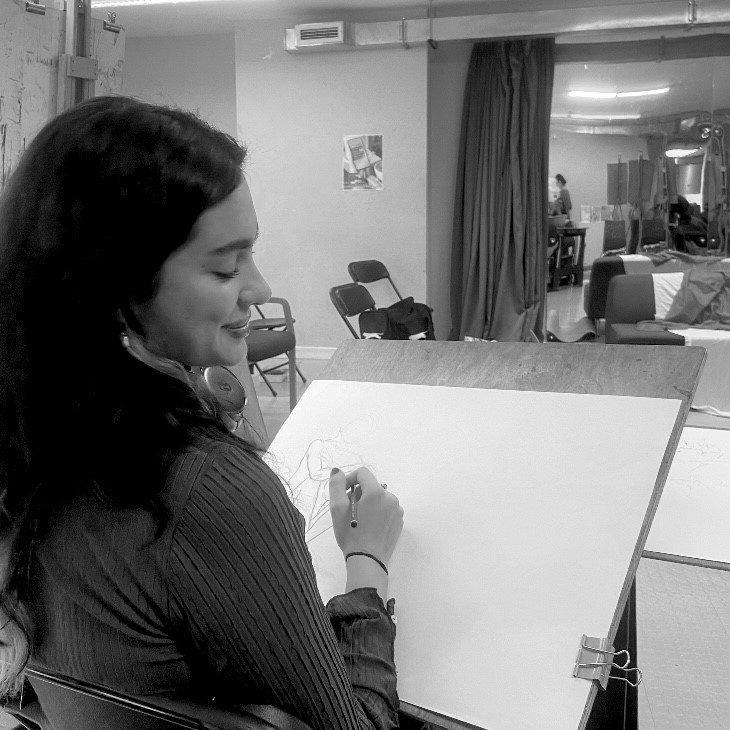
Esther Lundgren is a London-based freelance writer and Comparative Literature graduate. Her particular interests lie in postcolonialism and the arts as a means of amplifying underrepresented voices.

